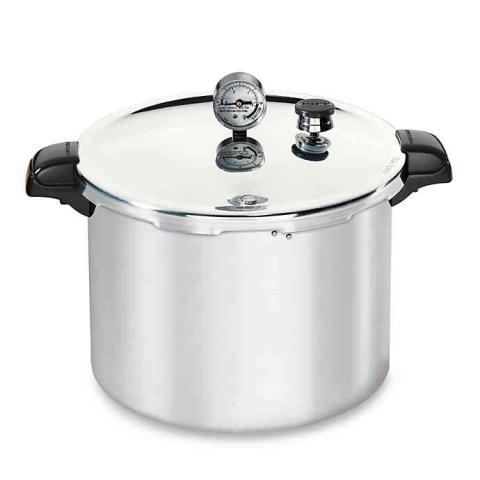Important Information for Canning Meats, Poultry & Soup

If you are canning low-acid foods, be sure to follow these steps.
As more families prepare meals at home, there has been a renewed interest in home canning meats, poultry, soups, and stews. The first thing to understand is that meat, poultry and products made with these items are low-acid foods and need to be canned using a pressure canner, not a pressure cooker, boiling water canner, or atmospheric steam canner.
Low-acid foods include meats and vegetables (except for acidified tomatoes and pickled products). Low-acid foods lack the acidity needed to inhibit the growth of bacteria and spores that can survive the temperature of boiling water (212°F).
The bacterium of greatest concern in home canning is Clostridium botulinum because it can produce spores that generate a dangerous toxin that causes food poisoning. Botulism spores thrive on low-acid foods in the absence of air, in the presence of moisture and at room temperature—the conditions inside a jar of home-canned meat or vegetables.
While spores of Clostridium botulinum may survive a boiling water bath, they are destroyed when processed in a pressure canner where the temperature can reach 240°F or higher.
Whether you consider yourself an expert or novice food preserver, you can save time, effort, and money by following these important steps:
1. Use only up-to-date tested recipes and methods and follow directions precisely. Always use tested recipes and procedures for the safety of the final product. Not all recipes found on the web or passed down by family members are scientifically tested. Unsafe recipes and procedures may result in severe illness. Tested recipes are based on precise amounts of ingredients and procedures and have been tested for safety with home food preservation.
Follow the latest USDA guidelines and use tested recipes from reputable sources such as any Cooperative Extension office nationwide, USDA Complete Guide to Home Canning, National Center for Home Food Preservation, and the Ball® Blue Book. PennState Extension has an excellent series of publications titled Let’s Preserve. Publications include fact sheets on canned meats, poultry, soups and stews as well as meat-based tomato sauces.
2. Know your altitude: Adjustments in processing time may have to be made for canning at altitudes of 1,000 feet or above. Most canning guides and recipes will tell you how to adjust processing based on your altitude.
3. Gather all your ingredients and equipment beforehand. Make sure you have everything you need, including ingredients, on hand so you can work quickly and efficiently. Inspect equipment and replace canner parts as needed.
4. Dial-gauges on pressure canners should be tested yearly for accuracy. UNH Extension provides this valuable service. Contact the Education Center at 1-877-EXT-GROW (1-877-398-4769) or answers@unh.edu for more information.
UNH Cooperative Extension has been providing information about preserving food at home for more than 109 years. The Education Center operates Monday to Friday, 9 a.m. to 2 p.m., answering calls, emails and questions through social media regarding a variety of topics, including home food preservation and testing of dial gauges for pressure canners.
Ann Hamilton is a regional Food Safety Field Specialist with the University of New Hampshire Cooperative Extension. She can be reached at 603-447-3834 or ann.hamilton@unh.edu.
